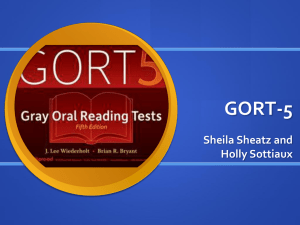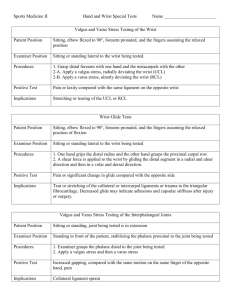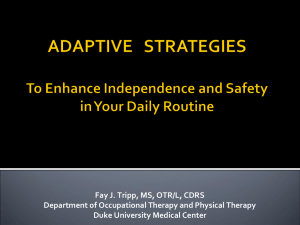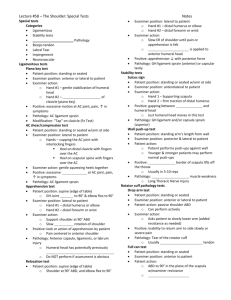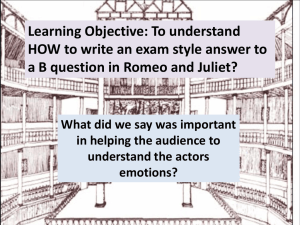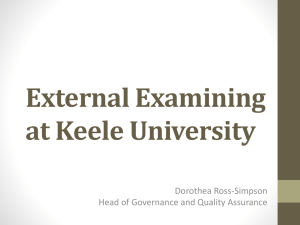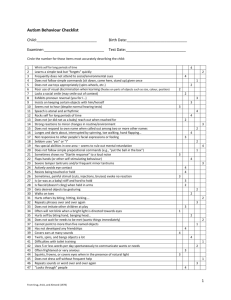The Wrist, Hand, & Fingers: Special Tests Notes Special tests
advertisement
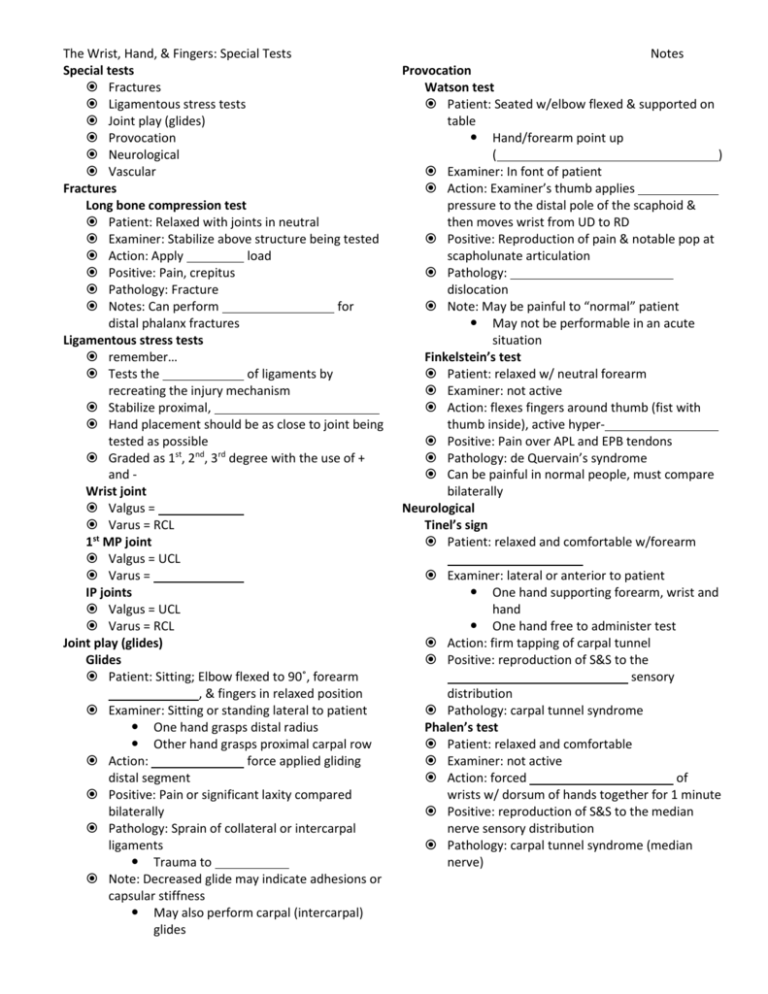
The Wrist, Hand, & Fingers: Special Tests Special tests Fractures Ligamentous stress tests Joint play (glides) Provocation Neurological Vascular Fractures Long bone compression test Patient: Relaxed with joints in neutral Examiner: Stabilize above structure being tested Action: Apply load Positive: Pain, crepitus Pathology: Fracture Notes: Can perform for distal phalanx fractures Ligamentous stress tests remember… Tests the of ligaments by recreating the injury mechanism Stabilize proximal, Hand placement should be as close to joint being tested as possible Graded as 1st, 2nd, 3rd degree with the use of + and Wrist joint Valgus = Varus = RCL 1st MP joint Valgus = UCL Varus = IP joints Valgus = UCL Varus = RCL Joint play (glides) Glides Patient: Sitting; Elbow flexed to 90˚, forearm , & fingers in relaxed position Examiner: Sitting or standing lateral to patient One hand grasps distal radius Other hand grasps proximal carpal row Action: force applied gliding distal segment Positive: Pain or significant laxity compared bilaterally Pathology: Sprain of collateral or intercarpal ligaments Trauma to Note: Decreased glide may indicate adhesions or capsular stiffness May also perform carpal (intercarpal) glides Notes Provocation Watson test Patient: Seated w/elbow flexed & supported on table Hand/forearm point up ( ) Examiner: In font of patient Action: Examiner’s thumb applies pressure to the distal pole of the scaphoid & then moves wrist from UD to RD Positive: Reproduction of pain & notable pop at scapholunate articulation Pathology: dislocation Note: May be painful to “normal” patient May not be performable in an acute situation Finkelstein’s test Patient: relaxed w/ neutral forearm Examiner: not active Action: flexes fingers around thumb (fist with thumb inside), active hyper Positive: Pain over APL and EPB tendons Pathology: de Quervain’s syndrome Can be painful in normal people, must compare bilaterally Neurological Tinel’s sign Patient: relaxed and comfortable w/forearm Examiner: lateral or anterior to patient One hand supporting forearm, wrist and hand One hand free to administer test Action: firm tapping of carpal tunnel Positive: reproduction of S&S to the sensory distribution Pathology: carpal tunnel syndrome Phalen’s test Patient: relaxed and comfortable Examiner: not active Action: forced of wrists w/ dorsum of hands together for 1 minute Positive: reproduction of S&S to the median nerve sensory distribution Pathology: carpal tunnel syndrome (median nerve) The Wrist, Hand, & Fingers: Special Tests Reverse phalen’s test Patient: relaxed and comfortable Examiner: not active Action: forced of wrist for 1 minute Positive: reproduction of S&S to the median nerve sensory distribution Pathology: carpal tunnel syndrome (median nerve) “ ” Vascular Allen test Patient: relaxed w/supinated forearms Examiner: lateral to patient One thumb over radial artery Other thumb over ulnar artery Actions: Patient opens and closes hand rapidly Examiner radial and ulnar arteries with thumbs Patient opens hand Examiner releases one artery watching for immediate flush of hand Repeat to test other artery Positive: slow circulatory refill (check bilaterally) Pathology: radial or ulnar artery insufficiency Notes

